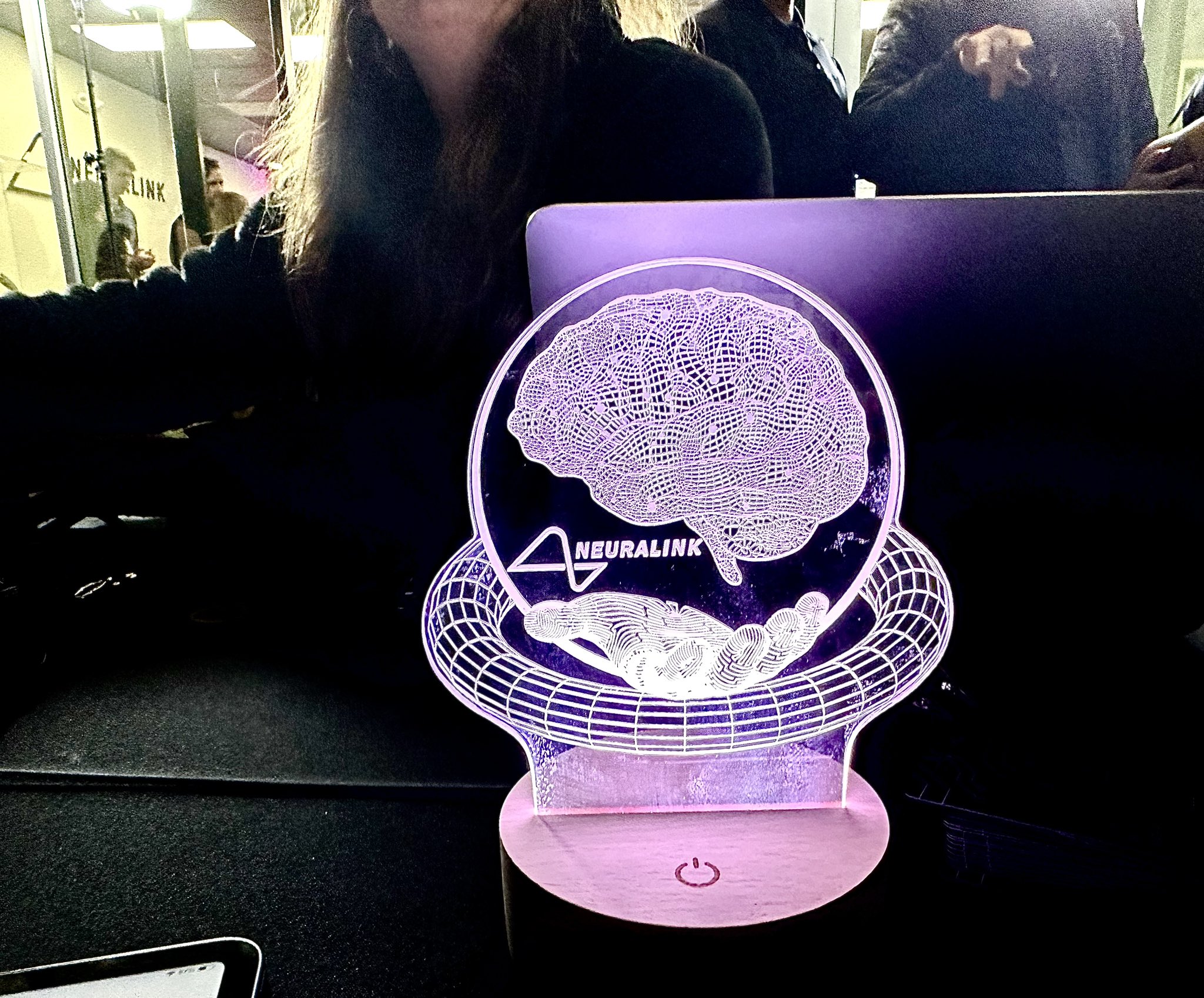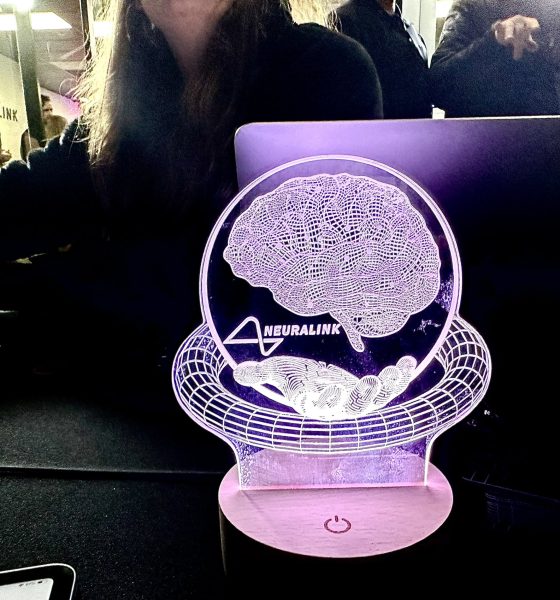

News
Neuralink’s first patient pondering ways to support himself and his family
Before he became Neuralink’s first human patient, 30-year-old Noland Arbaugh’s routine was restrictive. A lot of his and his family’s time was spent dealing with hospitals, insurance providers, and caregivers. He was also mostly communicating using a stick held in his mouth, which he uses to poke at an iPad. Since receiving his brain implant from Neuralink in January, Arbaugh’s life has changed, and in a recent social media post, he noted that he is now looking for ways to support himself and his family.
Thanks to his Neuralink implant, Arbaugh is able to manipulate tech devices using his mind. This means that he can now use computers proficiently. He noted as much when he admitted that the first thing he did after getting his Neuralink implant was play Civilization 6 for several hours. Thanks to this newfound proficiency, Arbaugh is also now active on social media platform X, where he recently posted a poll about how he can help provide for himself long-term.
As noted by Arbaugh in his post, he would like to find a way to provide for himself and possibly even help build a house for himself and his family. The Neuralink patient posted a few options on his polls, such as activities that he can now do due to his brain implant, such as streaming. Arbaugh also admitted that he has been quite hesitant to ask such a question, but he wishes to no longer be a burden to those around him.
Hey everyone! I’m in need of some advice. As was briefly touched on in the Bloomberg article today, I would like to find some way to provide for myself long-term, build a house for me and my family if I can, and not be a burden on those around me any longer. Below is a poll of…— Noland Arbaugh (@ModdedQuad) May 17, 2024
“Hey everyone! I’m in need of some advice. As was briefly touched on in the Bloomberg article today, I would like to find some way to provide for myself long-term, build a house for me and my family if I can, and not be a burden on those around me any longer. Below is a poll of just a couple of ideas I have and I’d like to know which y’all think is my best chance. If you have any other suggestions please leave a comment! Honestly, I feel weird even asking. That’s part of the reason why I haven’t done any of these so far. It makes me feel icky. Sorry to even bring this up,” Arbaugh wrote.
The Neuralink patient’s poll attracted quite a lot of attention, including from Tesla and SpaceX CEO Elon Musk himself. Arbaugh’s poll included options for monetizing his accounts, streaming, using GoFundMe, or “all of the above.” Similar to other users, Elon Musk advised the Neuralink patient to go for all his options, though the CEO noted that Arbaugh should probably start with monetizing his accounts and streaming first. Other users also advised the Neuralink patient that he can also go speaking tours and other activities since his life is inspiring and unique.
First two first— Elon Musk (@elonmusk) May 17, 2024
While Arbaugh’s poll is quite simple, its very presence highlights just how life changing Neuralink’s technology is to people. As noted in a Bloomberg News report, Arbaugh had actually attempted to get a job despite his condition in the past, but he has never been successful since he could not type fast enough. Things are a bit different with his Neuralink brain implant, however, so perhaps Arbaugh could achieve his dream of supporting himself and his family this time around.
Don’t hesitate to contact us with news tips. Just send a message to simon@teslarati.com to give us a heads up.

News
Tesla is not sparing any expense in ensuring the Cybercab is safe
Images shared by the longtime watcher showed 16 Cybercab prototypes parked near Giga Texas’ dedicated crash test facility.

The Tesla Cybercab could very well be the safest taxi on the road when it is released and deployed for public use. This was, at least, hinted at by the intensive safety tests that Tesla seems to be putting the autonomous two-seater through at its Giga Texas crash test facility.
Intensive crash tests
As per recent images from longtime Giga Texas watcher and drone operator Joe Tegtmeyer, Tesla seems to be very busy crash testing Cybercab units. Images shared by the longtime watcher showed 16 Cybercab prototypes parked near Giga Texas’ dedicated crash test facility just before the holidays.
Tegtmeyer’s aerial photos showed the prototypes clustered outside the factory’s testing building. Some uncovered Cybercabs showed notable damage and one even had its airbags engaged. With Cybercab production expected to start in about 130 days, it appears that Tesla is very busy ensuring that its autonomous two-seater ends up becoming the safest taxi on public roads.
Prioritizing safety
With no human driver controls, the Cybercab demands exceptional active and passive safety systems to protect occupants in any scenario. Considering Tesla’s reputation, it is then understandable that the company seems to be sparing no expense in ensuring that the Cybercab is as safe as possible.
Tesla’s focus on safety was recently highlighted when the Cybertruck achieved a Top Safety Pick+ rating from the Insurance Institute for Highway Safety (IIHS). This was a notable victory for the Cybertruck as critics have long claimed that the vehicle will be one of, if not the, most unsafe truck on the road due to its appearance. The vehicle’s Top Safety Pick+ rating, if any, simply proved that Tesla never neglects to make its cars as safe as possible, and that definitely includes the Cybercab.
Elon Musk
Tesla’s Elon Musk gives timeframe for FSD’s release in UAE
Provided that Musk’s timeframe proves accurate, FSD would be able to start saturating the Middle East, starting with the UAE, next year.

Tesla CEO Elon Musk stated on Monday that Full Self-Driving (Supervised) could launch in the United Arab Emirates (UAE) as soon as January 2026.
Provided that Musk’s timeframe proves accurate, FSD would be able to start saturating the Middle East, starting with the UAE, next year.
Musk’s estimate
In a post on X, UAE-based political analyst Ahmed Sharif Al Amiri asked Musk when FSD would arrive in the country, quoting an earlier post where the CEO encouraged users to try out FSD for themselves. Musk responded directly to the analyst’s inquiry.
“Hopefully, next month,” Musk wrote. The exchange attracted a lot of attention, with numerous X users sharing their excitement at the idea of FSD being brought to a new country. FSD (Supervised), after all, would likely allow hands-off highway driving, urban navigation, and parking under driver oversight in traffic-heavy cities such as Dubai and Abu Dhabi.
Musk’s comments about FSD’s arrival in the UAE were posted following his visit to the Middle Eastern country. Over the weekend, images were shared online of Musk meeting with UAE Defense Minister, Deputy Prime Minister, and Dubai Crown Prince HH Sheikh Hamdan bin Mohammed. Musk also posted a supportive message about the country, posting “UAE rocks!” on X.
FSD recognition
FSD has been getting quite a lot of support from foreign media outlets. FSD (Supervised) earned high marks from Germany’s largest car magazine, Auto Bild, during a test in Berlin’s challenging urban environment. The demonstration highlighted the system’s ability to handle dense traffic, construction sites, pedestrian crossings, and narrow streets with smooth, confident decision-making.
Journalist Robin Hornig was particularly struck by FSD’s superior perception and tireless attention, stating: “Tesla FSD Supervised sees more than I do. It doesn’t get distracted and never gets tired. I like to think I’m a good driver, but I can’t match this system’s all-around vision. It’s at its best when both work together: my experience and the Tesla’s constant attention.” Only one intervention was needed when the system misread a route, showcasing its maturity while relying on vision-only sensors and over-the-air learning.
News
Tesla quietly flexes FSD’s reliability amid Waymo blackout in San Francisco
“Tesla Robotaxis were unaffected by the SF power outage,” Musk wrote in his post.

Tesla highlighted its Full Self-Driving (Supervised) system’s robustness this week by sharing dashcam footage of a vehicle in FSD navigating pitch-black San Francisco streets during the city’s widespread power outage.
While Waymo’s robotaxis stalled and caused traffic jams, Tesla’s vision-only approach kept operating seamlessly without remote intervention. Elon Musk amplified the clip, highlighting the contrast between the two systems.
Tesla FSD handles total darkness
The @Tesla_AI account posted a video from a Model Y operating on FSD during San Francisco’s blackout. As could be seen in the video, streetlights, traffic signals, and surrounding illumination were completely out, but the vehicle drove confidently and cautiously, just like a proficient human driver.
Musk reposted the clip, adding context to reports of Waymo vehicles struggling in the same conditions. “Tesla Robotaxis were unaffected by the SF power outage,” Musk wrote in his post.
Musk and the Tesla AI team’s posts highlight the idea that FSD operates a lot like any experienced human driver. Since the system does not rely on a variety of sensors and a complicated symphony of factors, vehicles could technically navigate challenging circumstances as they emerge. This definitely seemed to be the case in San Francisco.
Waymo’s blackout struggles
Waymo faced scrutiny after multiple self-driving Jaguar I-PACE taxis stopped functioning during the blackout, blocking lanes, causing traffic jams, and requiring manual retrieval. Videos shared during the power outage showed fleets of Waymo vehicles just stopping in the middle of the road, seemingly confused about what to do when the lights go out.
In a comment, Waymo stated that its vehicles treat nonfunctional signals as four-way stops, but “the sheer scale of the outage led to instances where vehicles remained stationary longer than usual to confirm the state of the affected intersections. This contributed to traffic friction during the height of the congestion.”
A company spokesperson also shared some thoughts about the incidents. “Yesterday’s power outage was a widespread event that caused gridlock across San Francisco, with non-functioning traffic signals and transit disruptions. While the failure of the utility infrastructure was significant, we are committed to ensuring our technology adjusts to traffic flow during such events,” the Waymo spokesperson stated, adding that it is “focused on rapidly integrating the lessons learned from this event, and are committed to earning and maintaining the trust of the communities we serve every day.”








